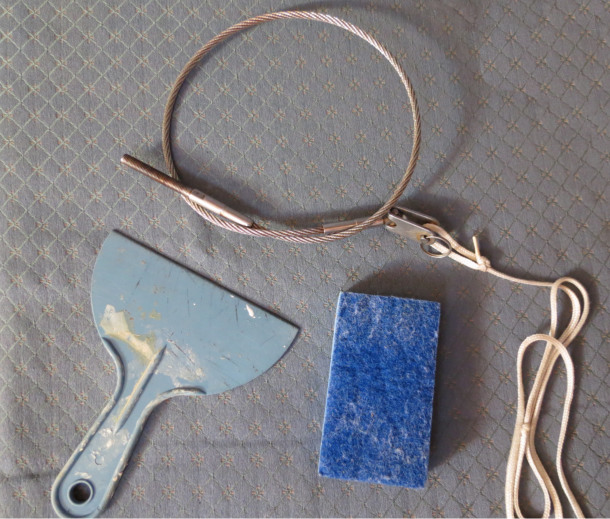The Blue View - Cleaning Her Bottom
/Two days ago, I donned my snorkel and mask and dove into the chilly water here to check out Nine of Cups' bottom. There are times when I wish we had an underwater camera. I do not possess the verbal skills to describe what the bottom of Nine of Cups looked like.
From the surface it didn't look too bad. The waterline had a build-up of slime and algae, but not any worse than could be expected after sitting in one place, neglected, for almost eleven months. Visibility in the water here is limited to just a few feet, so we couldn't see that much of the hull below the waterline. What we could see obviously needed attention, but it didn't look that daunting.
It was a different story when I viewed it from underwater. I have never seen so much growth on a boat's bottom. We could have made our fortune selling snorkeling tours to view all the colorful flora and fauna living there. The leading edge and bottom of the keel sported long rubbery tentacle things, 2-3 feet long – some sort of kelp I would guess. There were large bush-like growths along the lower areas of the hull that resembled terrestrial tumbleweeds, ranging in size from 1 to 3 feet. Each of the thru-hulls sported long white tubular growths, and I half expected to see a moray eel peering out at me. The entire hull was covered in a thick slime with the occasional red or white gooey animal adhering to the anti-fouling.
The rudder and the cavity that houses the prop were the worst. Those rubbery tube things and the tumbleweed bushes seemed to thrive there. It was now home to number of colorful tropical fish. I could only assume that the prop was actually still there – it was so overgrown I couldn't see it.
I used a nylon scrubbing pad to clean the waterline, a six inch plastic putty knife to clean the hull, and a short section of old stainless lifeline as a snake to clean out the thru-hulls. I have a hookah aboard for serious underwater work, but I thought I could get the majority of the hull done using only a snorkel and mask. The water here is cool, but not too cold, so I wore dive skins rather than a wet suit.
It took about two hours to clean the starboard side. By then I was pretty cold and I quit for the day. Yesterday, I cleaned the port side and the prop. All in all, it went much more quickly than I expected. The scraper easily removed the growth. The anti-fouling was in pretty good shape, and I find using a plastic putty knife instead of a scrubbing pad leaves most of it on the hull after a cleaning. We used PropSpeed propeller coating on the prop during the last haul-out, and it is amazing stuff. It is a gold colored coating that makes the prop too slippery for anything to take hold. The prop, once I removed the forest surrounding it, wiped totally clean with very little effort. Normally, I would have needed to spend an hour or so just cleaning it.
Somewhere along the way we lost the prop anode. This is a sacrificial hunk of zinc that protects the propeller from electrolysis. Our anode screws onto the end of the prop shaft, and I was able to remove the old screw and mount a new anode without dropping the anode, screw, washers or allen wrench. A good day!
Now we can pump water in the forward head, and the thru-hull that feeds raw water to the engine is no longer clogged. The large reef-in-the-works that was attached to Cups's bottom is gone and she seems noticeably happier (and lighter) in her berth.





